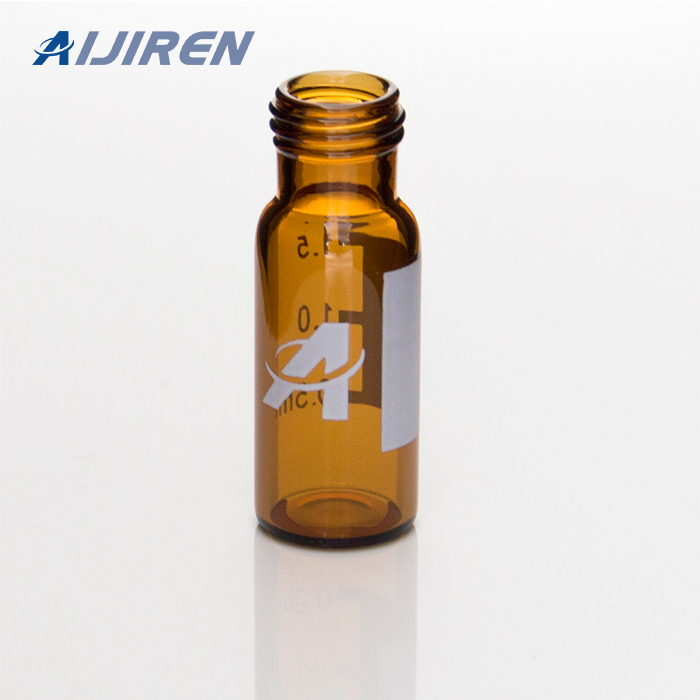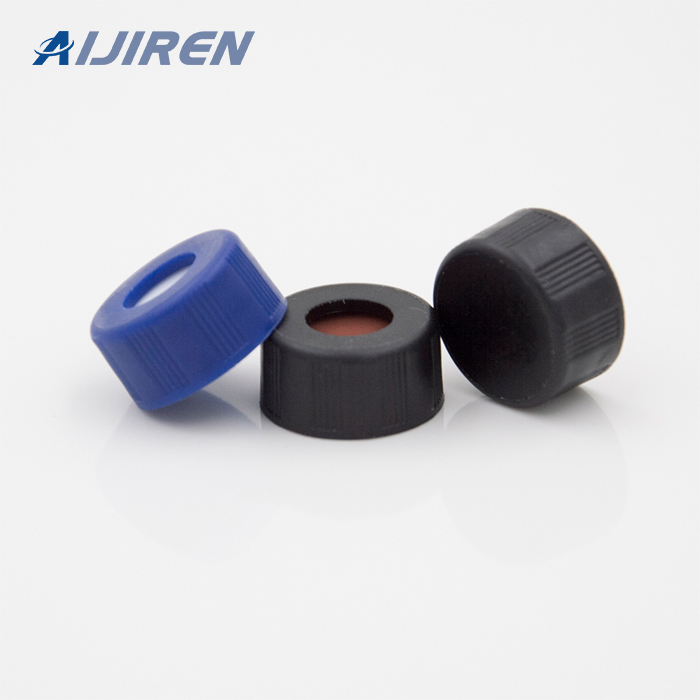








HPLC & GC Certified Screw Vial & Cap Kits for 2 mL Samples. Precleaned, EPA certified assembled kits; includes 40 mL screw vials and 24 mm open top screw caps. 0.3 and 1.5 mL screw top vial-cap kits for analysis of small sample volumes. For use with environmental analyses under EPA regulations.
The analyte and solvent compatibility should be considered in choosing vials and accessories. For example, amber glass is most often used for light sensitive samples while deactivated glass or plastic vials are used for compounds that are sensitive to glass or stick to the glass itself.
available on many vials provides a convenient place for sample identification information. Vials The wide variety of analytical instruments available requires a wide variety of sample vials. The most commonly used types are pictured below. Universal 9mm Vial The universal or 9mm vials were designed for use in autosamplers with robotic arms.
This table indicates the categories of vials that are compatible with various models of autosamplers. Certain autosamplers require the purchase of optional vial trays and, in few cases, programming upgrades to use all of the vials listed.
Vial choices include: Crimp Top, Snap Top, and Screw top vials with a selection of closures. Refer to the Autosampler Compatibility Table on pages 10-11 to determine which vials, closures and inserts will work on your specific autosampler unit. Headspace Vials • Superior Type 1, Class A high density glass thickness that distributes heat evenly
Choose from Aijiren Tech™ Premiere™, Aijiren Tech™ National™, Aijiren Tech™ Chromacol™ brands. Choose the right vial for your needs. Get maximum sample extraction without need for separate inserts by using Microsampling and High Recovery Vials; Identify sample and volume with graduated, write-on patch provided on
There are several factors to consider when choosing a vial or well plate for your application. The table below will help guide you through this process to determine what type of product/performance level is most suitable for your application requirements. SureStop/AVCS vials and cap technology Autosampler vial inserts with spring, the better
septum in place during needle insertion. There is no need to over-tighten the cap, as it can compromise the seal and lead to dislodging. The septum starts to cup or indent when you begin to over-tighten. There are three decisions you need to make when choosing the correct vial for your application: the septum, the closure and the vial itself.
The septum is one of the three main components of your sample containment system, consisting of the vial, septum, and cap. The septum is highlighted in red in Figure 1. Autosampler needle Septum Cap Vial Sample location Figure 1. A basic illustration of an Aijiren sample vial, highlighting the septum.
Jan 29, 2023 · Choosing the right septa for your work. In the same way that chemical composition underpins the choice of a vial, chemistry is an important factor in choosing the right septa for your work. The best analytical performance will be achieved with a septum in the cap of your vial that protects your sample and is as chemically inert as possible.
Need a chromatography vial that works well with your autosampler? ® Try our 2 mL screw vials with SureStop technology in combination with our AVCS caps • Seals effectively every time independent of operator, and reduces sample loss (as a result of evaporation). • Designed for all HPLC/UHPLC and GC compatible autosamplers
Some autosamplers use robotic arms to pick up vials while others use tray rotation. You'll want to check your autosampler's manual to determine what vial size you need. The type of vial you choose for your autosampler mostly depends on the required diameter. Regarding autosampler vial material, you can usually choose glass or plastic.
Given the importance of the serotype and the capsid protein composition, there exists a need for methods to identify and monitor the capsid and the capsid proteins through gene therapy development and manufacturing. Webinar: Gene Therapy, A New Analytical Playground, Existing Methods and Future Possibilities Columns for the AAV capsid analysis
Oct 13, 2022 · If the autosampler uses trays, you'll need to choose vials with dimensions to match the trays. Sample volume and composition: Consider the volume of the sample and the type of substance you'll be
Jun 13, 2023 · Step 1: Determine Vial Closure Style. Screw thread vials are typically used for HPLC and LCMS analysis. Screw thread vials do not require additional tools for attaching the cap, nor for removing the cap. Crimp Vials are commonly used as a GC Vial for gas chromatography analysis. Crimp Vials are the gold standard when concerned with sample